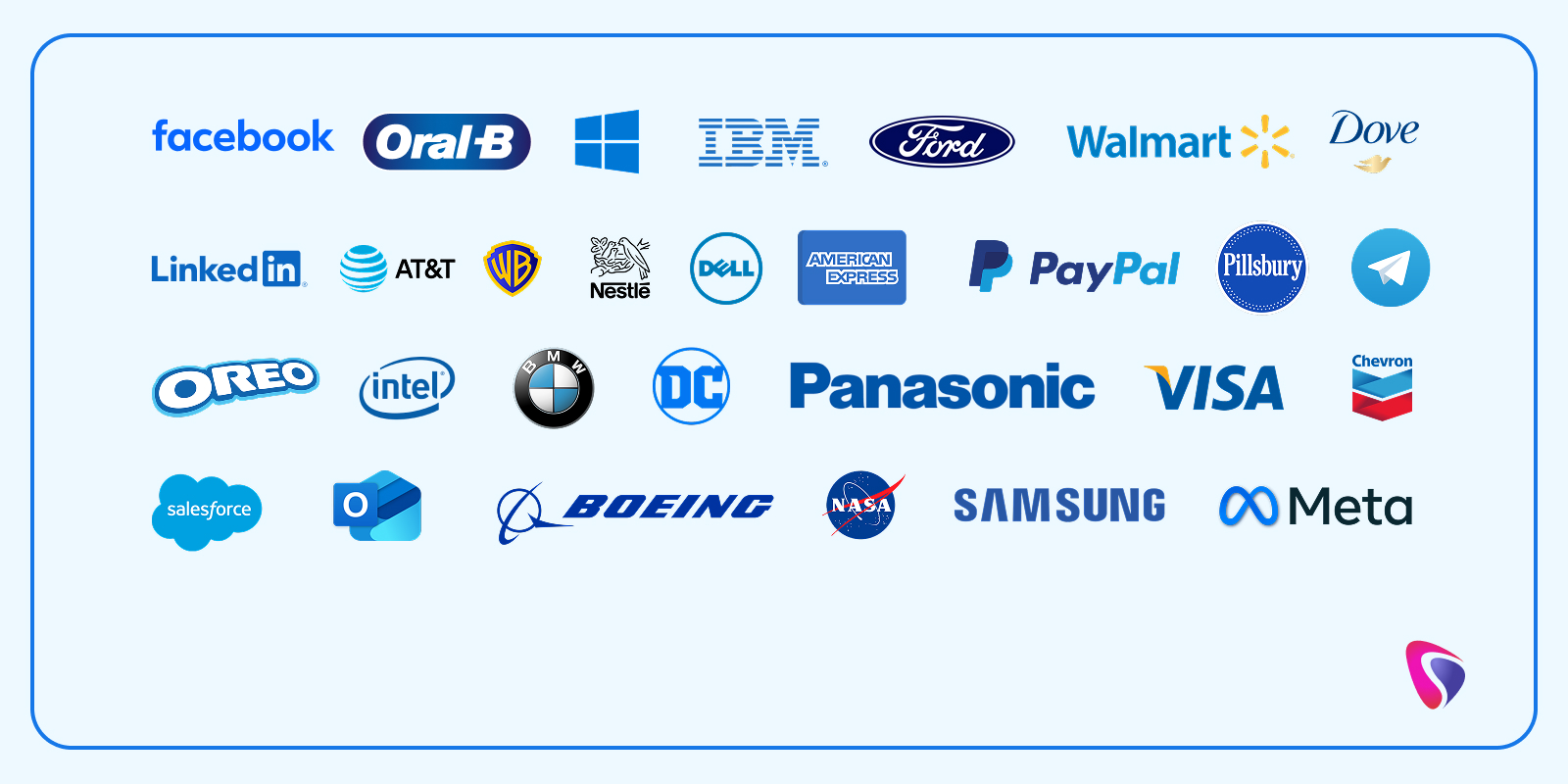
Layoffs are very uncertain; you never expect them to happen, but it's like one minute you're juggling meetings, and the next minute you find the email regarding a layoff.
Layoffs in the IT industry have become more common than we think. There can be many reasons for companies to lay off employees. From startups to global tech giants, they have to downsize teams when needed or when the circumstances are not in their favor. In recent years, people have seen many layoffs because of shifting business priorities, automation, or market slowdowns. If you've just been laid off, then maybe you're not alone and it's not even your mistake, but don't worry; you're not stuck.
Not the end of your career, just a tough interruption worth being converted into a turning point with the right attitude and strategy. What you do in the moments post-layoff spells the difference between being stuck or stronger in construction work. Post-layoff, regrouping financially, updating resumes, learning new skills, or smarter job searching are among the avenues proven to rebuild and empower your future.
This guide walks through actionable options that will get you on with clarity, confidence, and purpose. Because career recovery is possible and is the newly written chapter of your life.
Understanding the Impact of a Layoff
Let’s be honest; getting laid off hurts. This is more than just the loss of a pay cheque. There is a sudden shift in daily routines and a title lost that one has earned over the years, with all the uncertainty of what to do next. And in IT, where change is frequent and nonstop competition is there, the blow feels somewhat personal.
The Emotional Toll
The emotional fallout of a layoff is real and often underestimated. There’s frustration, fear, and embarrassment, even guilt, especially when you see colleagues still employed while you’re packing up your desk (or logging out of Slack one last time). For many IT professionals, work is more than a job — it’s part of their identity.
It is not necessary that your being laid off is the reflection of the lack of skills or potential. It’s a business decision — often driven by forces completely out of your control. And understanding that helps shift your focus from “Why me?” to “What’s next?”
The Financial Wake-Up Call
The emotional baggage takes the top spot. Now, the financial reality hits in: Rent, EMIs, bills, and responsibilities do not kindly take a break just for you. Without a fixed income, many professionals begin dipping into savings, limiting expenses, or hastily taking on whatever pays off, irrespective of whether the job corresponds with the person's skills or career aspirations.
This is why planning is important. Immediate steps to build even a temporary financial buffer can indeed buy time: time to think through actions rather than respond in panic.
Common Challenges in the IT World
The post-layoff ordeals for anyone in the IT world get a twist owing to the following:
- Saturation of skills in popular streams like web and application development.
- Employment gaps, which recruiters tend to question.
- Keeping oneself updated with unfolding technologies during a job search.
- Remote competition, with world candidates vying for the same opportunities.
Such hurdles can overwhelm you, but they can be tackled.
Why Mindset and Planning Matter
The truth is that the people who successfully bounce back after a layoff don’t always have the best resumes or the most certifications. Keeping the right mindset and positive attitude is important; this is not a big hurdle; it's just a lunch break pause, a chance to recharge and rebuild.
So start by acknowledging the impact. Accept the moment. And then, with clarity and purpose, plan your comeback. Because your next big opportunity might just be on the other side of this temporary storm.
What to Do Immediately After a Layoff
Let's face it. Whenever the words “Your position has been eliminated” are uttered, even a little, it may feel heavy and imposing. But these moments seem like an absolute whirlwind. Whatever you do in the hours and days afterward sets the tone for how you recover from the job loss.
So breathe. Then act.
Step 1: Stay Calm and Get Clarity
At first, your best feelings might be to panic, to seek redemption and to say plenty of angry things, or simply shut down; all very valid reactions. But once the first wave of emotion passes, the best thing you can do is maintain your composure and stay on task. It is time to gather the facts and get your paperwork in order.
Step 2: Collect Final Documents and Details
Before you log off for the last time, or go out of the office, make sure you get:
- Get a copy of your termination letter.
- Request your last payslip and final settlement details.
- Ask for any experience or recommendation letters, if applicable.
- Collect documents related to PF, tax forms, or bonuses.
- Back up your personal files or portfolio (if permitted).
These might not seem urgent now, but trust us — having everything organized will save you major headaches when you start applying for new roles.
Step 3: Know Your Rights
Here’s where you take off the employee hat and put on your business hat. You need to know what you’re entitled to:
- Severance pay: Are you getting it? How is it calculated?
- Healthcare benefits: Will your coverage continue? For how long?
- Notice period or compensation: Are you being paid instead of notice?
- Stock options or ESOPs: Can you retain or exercise them?
Ask HR for written answers if things seem vague. This isn’t just about money — it’s about protecting your future.
Step 4: Ask the Right Exit Questions
When emotions run high, often important conversations are overlooked. Before signing something or turning your back on the company:
- Ask why your position is going using questions purely for insight, never for confrontation.
- Ask how your exit will be communicated to teams and clients.
- Will you be considered for rehire later?
- Ask for a contact or HR suitable for a reference.
Asking these questions shows professionalism, although this is not a pleasant experience, but your spirit is what matters at the end of the day. First steps laid the foundation for a stronger, more confident beginning on the journey forward. Knowing what to do after a layoff, in practical and calm terms, is your very first win on the road to rebuilding.
Managing Finances After Job Loss
When the paycheques stop but the bills keep rolling in, reality hits fast. The emotional toll of being laid off is heavy enough, but the financial stress can feel downright paralysing. That’s why one of the most important things to do right after a layoff is to get honest about your money.
This isn’t about fear — it’s about focus. The goal? Stretch what you have, control what you spend, and create space to recover.
- Create a Temporary Budget That Works Now
Your budget during employment and your budget after a layoff are two very different things. Start by reviewing your bank statements from the last two to three months. Identify your essential expenses:
- Rent or mortgage
- Utilities
- Groceries
- Insurance premiums
- Loan EMIs
This becomes your bare-minimum survival budget. From there, adjust your lifestyle temporarily to prioritize needs over wants. Think of it as financial triage — it’s not forever, just for now.
- Cut the Extras Without Guilt
We all have auto-renew subscriptions and casual spending habits we barely think about — streaming platforms, food delivery apps, premium tools, impulse online buys. It’s time to cut or pause them. Yes, some things bring comfort, but your peace of mind comes from financial stability, not another Netflix series.
Pro tip: Reframe it mentally. You’re not “giving things up”; you’re making room for a stronger comeback.
- Revisit Your Emergency Fund (If You Have One)
If you’ve been setting aside money for a rainy day — well, this is it. Don’t feel guilty dipping into your emergency fund. That’s exactly what it’s for. Just use it wisely. Break it into monthly chunks if needed and track every rupee spent.
No emergency fund? Don’t panic. Focus on reducing expenses immediately and consider borrowing from yourself — think fixed deposits, recurring deposits, or low-risk mutual fund withdrawals, if absolutely necessary.
- Explore Unemployment Benefits and Support Programs
Depending on where you live, you might be eligible for unemployment benefits, severance support, or short-term government aid. Many IT professionals overlook this out of pride or confusion — but this is not charity. It’s part of the social safety net designed for moments just like this.
Also, check for:
- Health insurance continuity options
- Reskilling grants or programs
- Interest-free loan deferrals (some banks offer this for laid-off workers)
Take advantage of every legitimate option available. It’s a critical part of your financial recovery after a layoff.
Managing finances following a job termination is not about perfection but about purposeful choice. The good thing about it is, when you go about your finances proactively, you get to conserve your resources as well as earn something vital: peace of mind. That mental clarity is exactly what you need to focus on your next move.
Resume After Layoff: How to Update It Right
Let’s get one thing straight: getting laid off doesn’t make your resume any less impressive — if anything, the experience may provide an extra touch of distinction for a new polishing of the story and emphasis on how aligned one is with the next move. It is confusing to draft a new resume after losing a position and yes, many people do feel overwhelmed about how to mention the layoff in the resume, but don't worry; you can put it well so that your story can be heard too.
1. Start with a Fresh Lens
Don’t simply attach your last year or so of working life to an existing ready. Use this exit as a chance to go down a bit further and start on fresh grounds with your CV. Here are a few questions to begin:
- What did I accomplish?
- What problems did I solve?
- What value did I bring to teams, clients, or users?
Start with noting down your experiences, your top skills, and your future goals to help you focus on the future. Be confident; you don't have to bring up the layoff.
2. Highlight Achievements, Not Just Responsibilities
Anyone can write, “Managed backend development for a mobile app.” But what makes a recruiter pause is impact. Try:
“Led backend development for a cross-platform healthcare app that reduced appointment scheduling time by 40% and supported over 50K users.”
Focus on:
- Metrics (users, revenue impact, speed improvements)
- Technologies used (especially if current or in-demand)
- Team collaboration or leadership highlights
- Problem-solving under pressure (yes, that tough sprint counts!)
For IT professionals, your resume should read like a portfolio in words, not a job description.
3. Include Relevant Projects or Freelance Work
Laid off and had a gap of a few months? That’s okay — fill it with purpose. Did you:
- Contribute to open-source projects?
- Build personal or freelance apps?
- Start a certification or side hustle?
Include it. Even unpaid or self-initiated projects matter. They show you're proactive — a big plus in the eyes of tech recruiters.
4. Addressing the Layoff Gracefully (If You Need To)
You don’t have to mention the layoff on your resume. But if you choose to — or if you're asked during interviews — keep it simple and professional. For example:
“Position eliminated due to company-wide restructuring.”
That’s it. No need for details. Most hiring managers, especially in IT, understand how unpredictable the tech world can be. You can add a little note on your cover letter where you express how you've utilized this time for upskilling so you can continue delivering value to organizations.
Bonus Tip: Refresh Your LinkedIn Too
Your resume and LinkedIn shouldn’t be copy-paste versions of each other, but they should tell a consistent story. Update your title, summary, and recent roles — and consider turning on the “Open to Work” feature (even discreetly). That single move can fast-track your career recovery.
Rebuilding your resume after a layoff isn’t about hiding what happened — it’s about highlighting what you’ve done and where you’re headed. A layoff doesn’t erase your experience or your worth. In fact, it gives you a reason to revisit your professional story — and tell it better than ever.
Upskilling After Job Loss: Boost Your Tech Value
When the dust settles after a layoff, it’s easy to feel like your career is on pause. But here’s the upside: now is the perfect moment to hit refresh on your skill set. In the IT world, learning never stops, and keeping your skills sharp isn’t just optional anymore — it’s survival.
Whether you’ve been in backend for a decade or just wrapped up your first full-stack project, the tech industry rewards adaptability. And one of the best ways to bounce back after a layoff is to upskill with intent.
Why Upskilling Matters Now More Than Ever
The IT job market is competitive, but not impossible. Companies are still hiring. Projects are still launching. What’s changed is who they hire. Employers are looking for developers, engineers, and IT specialists who are future-ready — with updated skills, real-world know-how, and the curiosity to keep growing.
Upskilling after losing a job:
- Fill in employment gaps from a purpose-driven angle.
- Be the chosen one in job searches.
- Boost your confidence during interviews.
Let doors open for you to in transitioning into IT (QA-to-DevOps or mobile-to-AI).
Top In-Demand Tech Skills in 2025 and Beyond
Don't know where to begin? Go after high-growth areas where demand still grows:
- AI & Machine Learning: Chatbots, predictive analytics—name it and AI is there.
- Cloud Computing (AWS, Azure, GCP): Businesses rushing to the cloud need to be talent while building and managing.
- DevOps & Automation: CI/CD pipelines and containerization through Docker and Kubernetes, and infrastructure as code, are must-knows.
- Mobile App Development: Swift, Kotlin, Flutter — mobile is here to stay, especially for startups and consumer tech.
- Cybersecurity: With rising threats, companies want devs who code securely and understand risk.
- Data Engineering: Big data, real-time processing, and analytics continue to be hot topics.
Just don't think of these as buzzwords—think of these as launches to your next gig.
Best Platforms for Learning (Free + Paid)
Ready to skill up? Good news: there’s no shortage of learning options. Whether you're looking for a budget-friendly course or an industry-backed certification, here’s where to start:
Free Learning Platforms:
- FreeCodeCamp – Great for hands-on practice in web dev, JavaScript, and more.
- Google Cloud Skills Boost – Get hands-on labs and skill badges in the cloud.
- AWS Skill Builder – Free foundational training with real scenarios.
- MIT OpenCourseWare – High-quality content for programming, AI, and beyond.
- GitHub – Explore open-source projects and learn by contributing.
Paid & Premium Platforms:
- Udemy – Affordable courses on just about everything tech-related.
- Coursera – University-level programs, some with certifications.
- Pluralsight – Ideal for professionals looking for structured learning paths in DevOps, cloud, and software architecture.
- edX – Partnered with universities like Harvard and MIT.
- LinkedIn Learning – Also great for soft skills, resume writing, and career growth tips.
Pro tip: Build a project as you learn. Nothing impresses like a portfolio that proves your skills, especially in tech.
Upskilling after job loss isn’t just about learning something new — it’s about showing the world (and yourself) that your career isn’t on hold. It’s evolving. You’re not just waiting for an opportunity — you’re building toward one. That mindset alone is a major win in your career recovery.
Job Search After Layoff: Smart and Strategic Moves
Let’s be honest — the job hunt post-layoff can feel like a rollercoaster. One day you’re motivated; the next you’re doubting everything. But here’s the truth: the right opportunities still exist — and with a few smart, strategic moves, you’ll find them faster than you think.
Searching for a job after a layoff isn’t just about applying everywhere — it’s about applying with purpose.
Tailor Every Application Like It’s the Only One
Sending out 50 resumes in one sitting might feel productive, but generic applications rarely get noticed. Instead, focus on quality over quantity.
Here’s how to tailor effectively:
- Customize your resume for each job (use the job description as your guide).
- Update your summary to reflect your current focus — mention recent upskilling or freelance projects.
- Highlight transferable skills — if you’re making an IT career transition, connect the dots for recruiters.
- Use keywords from the job listing — especially tech stacks, tools, and soft skills.
Also, consider writing a short but thoughtful cover letter (yes, recruiters still read them!) — especially if you’re addressing a gap due to a layoff. Keep it honest and professional.
"After a recent company-wide layoff, I’ve focused on sharpening my cloud architecture skills and am now seeking a role where I can contribute to scalable, high-impact solutions."
Make LinkedIn Work For You (Not Against You)
If you're not on LinkedIn, now is the time. And if your profile is outdated, it's time for a glow-up.
Here’s what to do:
- Update your headline to reflect the kind of role you’re targeting (e.g., “Full-Stack Developer | React & Node.js | Open to Opportunities”).
- Rewrite your About section as your professional pitch — highlight your skills, achievements, and what you’re looking for.
- Turn on the "Open to Work" feature (you can make it visible only to recruiters if you prefer discretion).
- Ask for recommendations from past colleagues or clients.
- Engage! Comment on posts, share your learnings, and even post about your job search journey (authentically, not desperately).
LinkedIn isn’t just a resume hub — it’s a living, breathing network of IT job opportunities, industry updates, and connections waiting to happen.
Use Niche Job Boards and IT-Focused Platforms
Don’t limit yourself to the same 2-3 job portals. Expand your reach by using industry-specific and developer-friendly platforms:
- AngelList Talent – Ideal for startup tech roles
- Stack Overflow Jobs – For dev-specific openings
- Toptal, Turing, Gun.io – For freelance and remote tech work
- Wellfound (formerly AngelList) – Startup tech companies actively hiring
- Remote OK, We Work Remotely – Especially good for full-remote IT roles
These platforms often post jobs before they hit the big boards, meaning less competition.
Work with Tech-Savvy Recruitment Agencies
If you’ve never worked with a recruiter, now’s the time to consider it, especially those who specialize in tech hiring.
- Look for IT staffing firms that understand roles like DevOps, Data Engineering, AI/ML, etc.
- Reach out directly via LinkedIn with a short intro and your resume.
- Be clear about what you’re looking for — not just any job, but the right fit.
Bonus: Many companies hire software developers exclusively through trusted recruitment partners. Being on a good recruiter’s radar can give you access to hidden opportunities.
The job search after a layoff doesn’t have to feel like wandering in the dark. With the right tools, clarity, and consistent effort, your next opportunity might just be one tailored resume or LinkedIn message away. Stay focused, stay proactive — and remember, a layoff is a career detour, not a dead end.
IT Career Transition: Exploring New Avenues
A layoff can feel like the end of the road — but often, it’s just a sharp turn toward something even better. In the ever-evolving world of tech, a career transition isn’t just possible, it’s often the smartest move you can make.
Whether you’ve been in the same role for years or are simply ready for a fresh challenge, now’s the time to explore new paths within IT that align with your interests, goals, and the future of the industry.
Reinvent Your Role: From QA to DevOps (or Beyond)
Let’s say you’ve worked in QA for most of your career. You understand testing, workflows, bug-tracking, and agile processes. Why not build on that and shift into DevOps, SRE, or automation testing?
These transitions aren’t about starting from scratch — they’re about leveling up.
Think about transitions like:
- Frontend Developer ➝ UI/UX Engineer
- Backend Developer ➝ Cloud Engineer or Solutions Architect
- Manual QA ➝ Automation + DevOps
- Web Developer ➝ AI/ML Engineer (with upskilling)
When it comes to an IT career transition, your existing knowledge is your foundation — the key is stacking it with new tools and perspectives.
Freelance, Contract Work, and Startup Gigs: Try Before You Commit
Not ready to jump into another 9-to-5 right away? That’s okay. Freelancing or contract roles can help you:
- Stay financially afloat
- Keep your skills sharp
- Test new industries or roles
- Build your network
In fact, many developers who start freelancing post-layoff end up landing long-term contracts — or even turning those gigs into full-time roles.
Start by checking:
- Upwork, Toptal, Fiverr – For global freelance work
- Gun.io, Arc.dev, Lemon.io – Developer-first contract jobs
- Startup job boards – Smaller companies are often flexible and eager to work with experienced talent
Plus, working with startups can offer unmatched exposure to end-to-end product development, making you a more well-rounded tech pro.
Switching Domains: From Web to AI/ML or Cloud
Maybe you’ve been building websites for years, and now you’re eyeing the booming field of artificial intelligence, cloud infrastructure, or data science. Guess what? You don’t need a PhD to make that switch — just the right learning path and a portfolio to back it up.
Smart transition moves:
- Web to AI/ML – Start with Python, TensorFlow, and scikit-learn. Build small ML projects like recommendation systems or image classifiers.
- Mobile Dev to Cloud – Learn how to deploy apps on AWS or Azure, explore serverless functions, CI/CD pipelines, and cloud storage.
- SysAdmin to DevOps – Add tools like Docker, Kubernetes, Jenkins, and Terraform to your arsenal.
The tech world values self-starters and tinkerers. Show up with projects, GitHub repos, or certifications, and the shift becomes more than possible.
A career transition after job loss doesn’t mean giving up what you know — it means reinventing what you can do with it. Whether you're diving into cloud, dabbling in AI, or giving startups a shot, this is your time to grow in a new direction.
You’re not behind: you’re rebuilding. And the IT world? It’s ready for your next chapter.
Why Layoffs Can Be a Hidden Opportunity
Let’s flip the script.
No one wants to be laid off — but sometimes, it’s the push we didn’t know we needed. For many IT professionals, what starts as a setback turns into a setup for something better. It’s painful in the moment, but it can open the door to career clarity, freedom, and even long-term success you may not have considered otherwise.
From Job Loss to Jumpstart: Real Stories of Reinvention
Take the backend developer who lost their job at a large IT firm in a restructuring — within six months, they had picked up DevOps skills, started freelancing, and now consults for global SaaS startups.
Or the QA tester who decided to explore mobile app development after being laid off. Today, they’ve built two indie apps with thousands of downloads and landed a full-time role at a growing product company.
Layoffs forced them to pause, reflect, and reroute, and that made all the difference.
These aren’t outliers. They’re examples of what happens when you treat a layoff not as the end, but as the beginning of something better.
Career Clarity: Knowing What You Actually Want
Sometimes, working nonstop in a job makes it hard to step back and evaluate. A layoff gives you space — mentally and emotionally — to ask:
- What kind of work excites me?
- Do I want to shift into a different tech role?
- Am I ready to freelance, build, or launch something on my own?
- Do I want to work in a fast-paced startup or a more stable product company?
This kind of clarity is powerful — and often overlooked when we’re just jumping from one job to the next.
Better Opportunities, Not Just Another Job
Being laid off allows you to be selective, not desperate. You get to rebuild your professional identity on your terms — with better tools, updated skills, and a deeper understanding of your value.
You may:
- Find roles that offer remote flexibility or better work-life balance
- Transition into fields like AI/ML, cloud, or mobile development
- Work for companies that align more with your values
- Connect with IT job opportunities that match your growth, not just your resume
Many IT professionals say their post-layoff roles paid better, offered more growth, and aligned more with their passions than the jobs they lost.
A layoff might close one chapter, but it can unlock an entirely new story — one that you get to write.
If you're navigating job loss, know this: the setback is real, but so is the comeback. With the right mindset, upskilling, and smart job search strategies, you're not just surviving this — you're bouncing back stronger.
Conclusion
A layoff may feel like a full stop but in reality, it’s just a comma in your career story. Whether you’re reworking your resume, learning the latest tech skills, or exploring new directions within IT, know this: you absolutely can bounce back stronger, personally, financially, and professionally. Every challenge you’ve faced during this period can fuel your next breakthrough.
At Hyperlink InfoSystem, we understand how uncertain the tech industry can feel right now and we also know the incredible value experienced, skilled professionals bring to the table. That’s why we continue to hire software developers, cloud engineers, mobile app developers, AI experts, and other talented individuals who are ready to build what’s next.
We believe in the power of reinvention. Whether you're navigating an IT career transition, returning to work after a pause, or simply looking for a better opportunity, there’s a place for you here. The tech world is still full of possibilities and your skills, passion, and resilience are exactly what it needs.


















